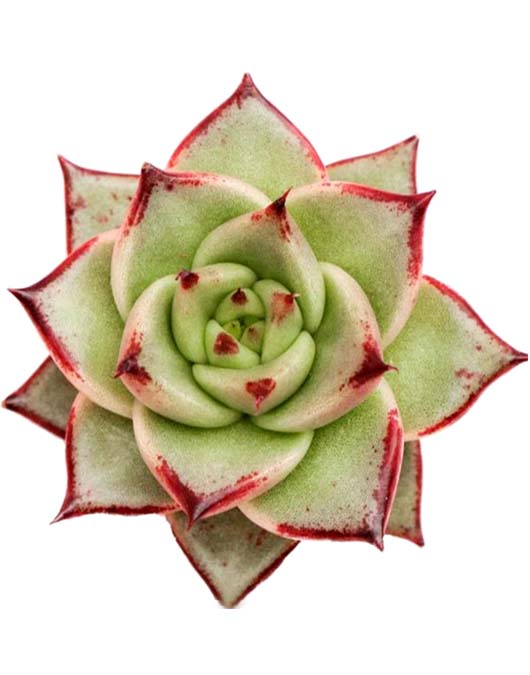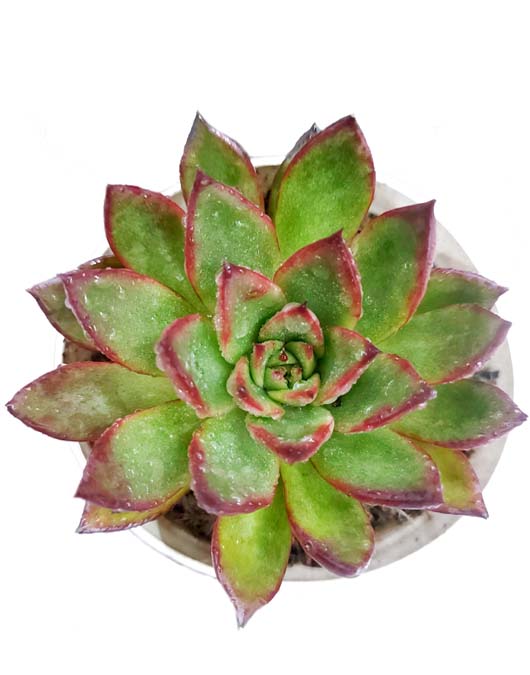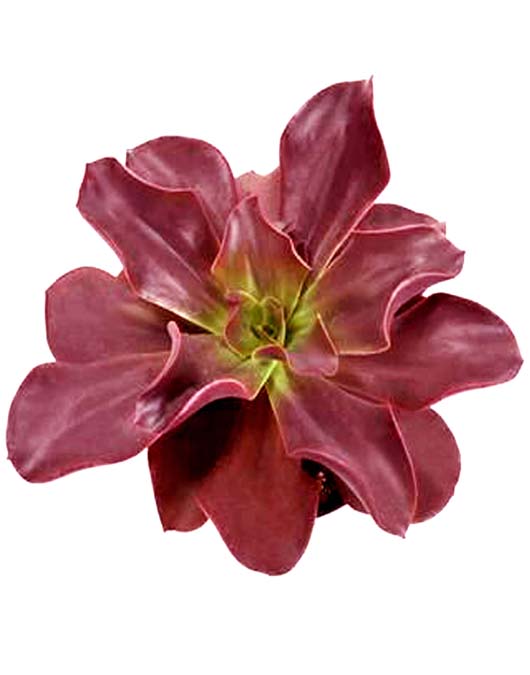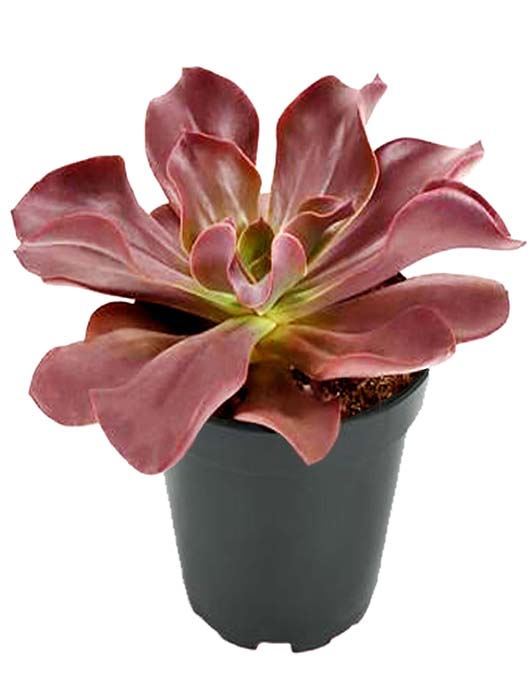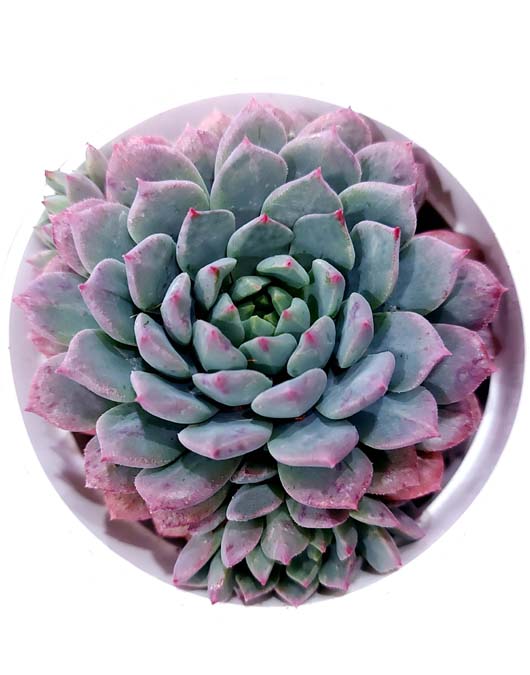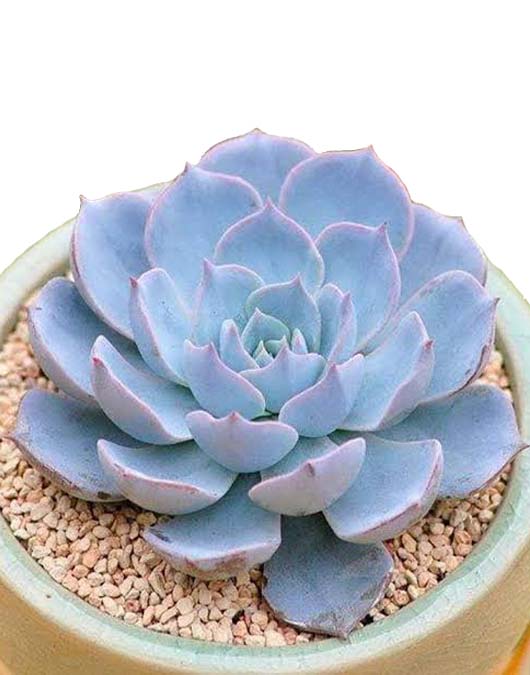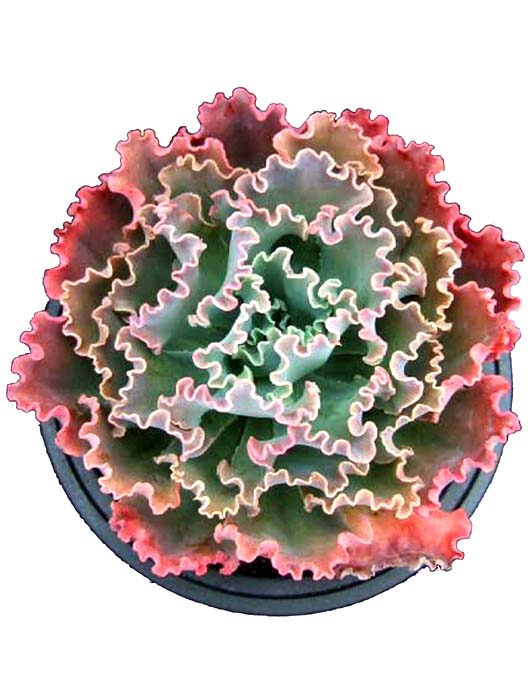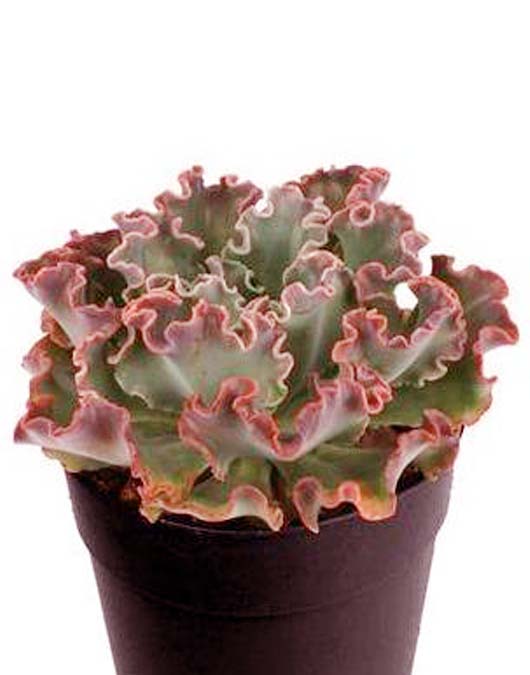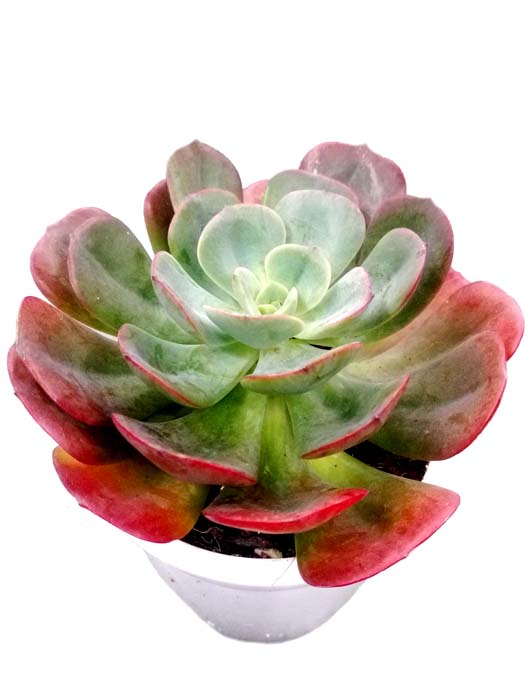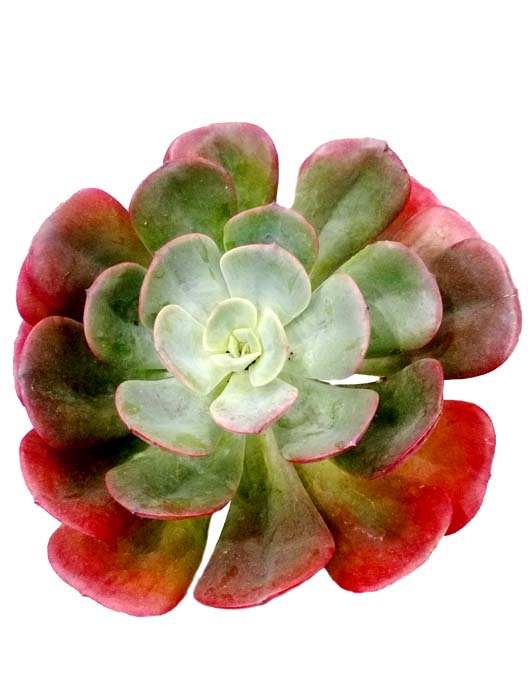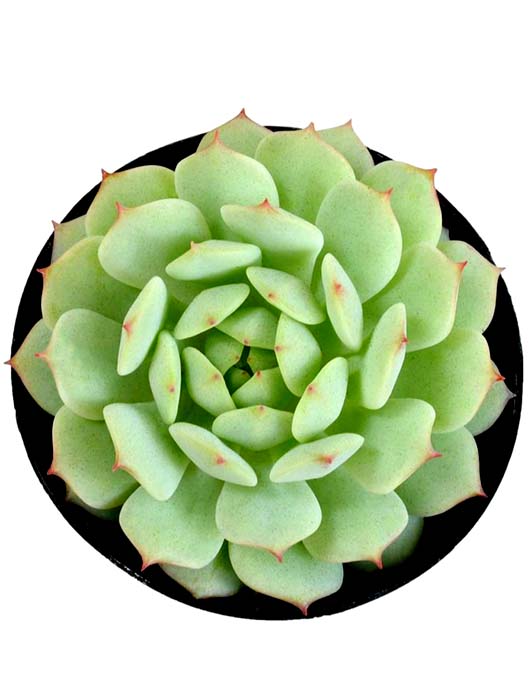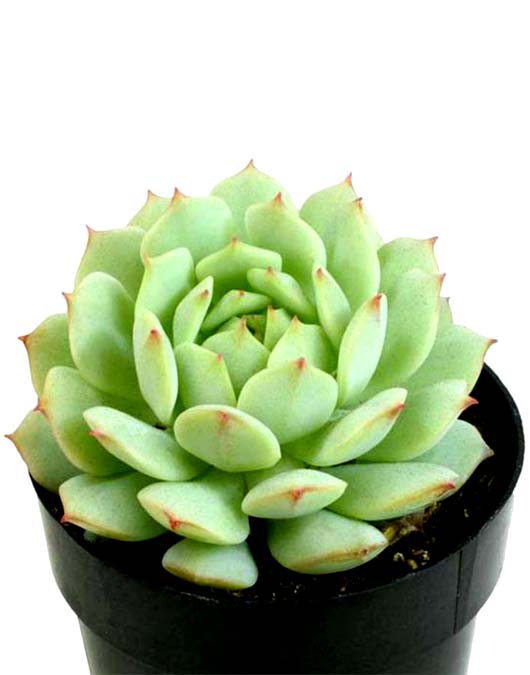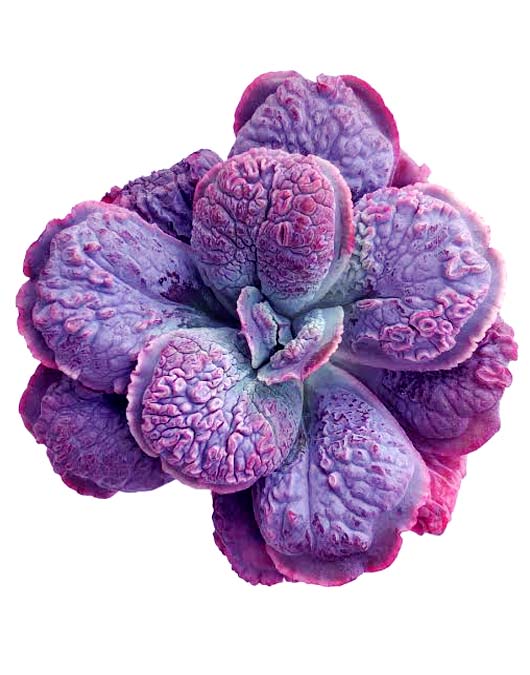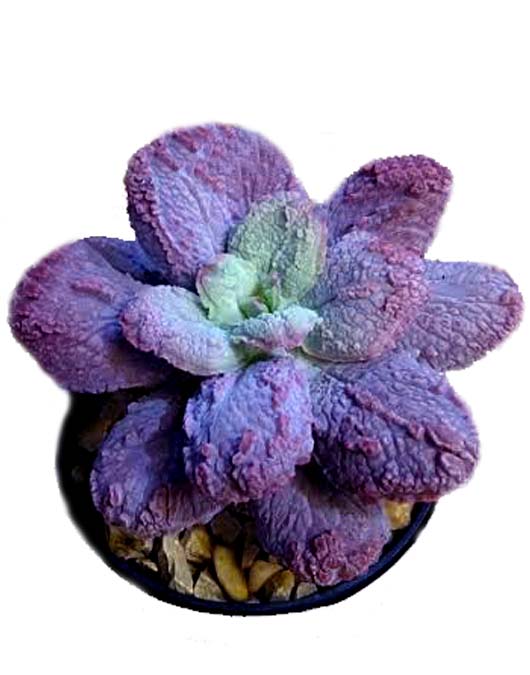- Extraordinarily eye-catching, Echeveria agavoides ‘Lipstick’ is a small evergreen succulent forming crisp rosettes of fleshy, sharp-pointed,
- Echeveria agavoides ‘Red Edge’, also known as Echeveria agavoides ‘Lipstick’, is an attractive succulent that usually has a solitary rosette even when old.
- Echeveria agavoides ‘Lipstick’ – This rosette-forming succulent forms clumps of individual plants that are around 6 inches tall by 8 to 12 inches wide with apple-green leaves with vivid red-pink edges and a terminal spine reminiscent of an Agave.
- Echeveria agavoides Lipstick blooms in summer with red flowers tipped in yellow..
- Plant Will Be Given With Plastic Pot
- Echeveria ‘Autumn Flame’ is a magnificent succulent that forms rosettes of uniquely shiny undulate reddish-brown leaves with lighter red margins
- The Rosette Displays a spiraling effect, each Leaf slightly Overlapping the one closer to the center.
- Echeveria ‘Autumn Flame’ can be quite beautiful when it is well-taken care of.
- This succulent type needs typical watering as the other succulents. The watering method is very important to keep your Autumn Flame healthy. It should not sit on the water, and an excess amount of water should be avoided. The best way of watering is soak and dry method this succulent. Yet, the succulent should be controlled to avoid overwatering.
Out Of Stock
EtonGreen Live Echeveria Azulita Succulent Plant
- Echeveria ‘Azulita’ is a succulent that forms small rosettes of icy blue leaves with powdery coating and attractive red tips.
- The alluring appearance of this variety is due in part to a thick coating of farina, which lends a powdery and delicate look to the chubby leaves. As it matures, the 5-inch wide rosettes will form small clusters, perfect for a standalone container, as an accent within an arrangement, or as a groundcover in a rock garden.
- Echeveria ‘Azulita’ offsets freely, and we mean freely, to form many small clusters. That means seemingly countless blue leaves with gorgeous red tips. Great for windowsill gardening or dish gardens. Forms arching flower spikes of bright golden-orange flowers.
- Its other needs are typical of most succulents, including porous soil with adequate drainage, and thorough watering only when the soil is dry. Take care to provide ‘Azulita’ with ample airflow, and avoiding pouring water directly into the rosettes to help avoid pests and rot.
Out Of Stock
EtonGreen Live Echeveria Blue Bird Succulent Plant
- Echeveria is a large genus of flowering plants in the family Crassulaceae, native to semi-desert areas of Central America, Mexico and northwestern South America.
- Echeveria ‘Blue Bird’ is a rosette-shaped succulent with super powdery blue leaves and reddening edges during fall and winter seasons. The long-lasting flowers are pink-orange on slender stalks up to 10 inches (25 cm) long, in early summer.
- Echeveria Needs Potting soil mix That Drains Quickly
- Beautiful Plant For Desk Top
- Water needs only moderate watering when established Keep in direct sun, water in morning, and water only when soil is fully dry
Out Of Stock
EtonGreen Live Echeveria Blue Curls Succulent Plant
- Echeveria ‘Blue Curls’ – A mostly solitary plant with rosettes to 10 inches wide with frilly-edged blue-green leaves that take on showy pink hues
- Echeveria are popular and extremely valuable succulents for their stunning colours and variation, prized by collectors and gardeners alike.
- The hybrid, “Blue Curls’ is very fascinating evergreen perennial with frilly-edged silvery-blue to blue-green leaves that have edges in showy pink hues
- Occasionally it produces pencil-sized flowering spikes with reddish-pink to hot pink and orangy bell-shaped flowers
- Plant Will Be Given With Free Plastic Pot
Out Of Stock
EtonGreen Live Echeveria Blue Sky Succulent Plant
- Echeveria ‘Blue Sky’ is an attractive, fast-growing succulent that forms large rosettes up to 12 inches (30 cm) in diameter. The leaves are of spatulate, glaucous blue-green and tipped in red Echeveria ‘Blue Sky’, possibly a hybrid of Echeveria ‘Imbricata’, forms large rosettes of spatulate glaucous deep blue leaves tipped in red.
- Live Echeveria (Hybrid) Succulent Plant
- Plant Will Be Given With Free Plastic Pot
- The “Painted Lady Echeveria” known botanically as Echeveria Derenbergii
- Echeveria Derenbergii blue has a rosette growth habit, fleshy leaves with whitish green blunt-edged triangles
- Like all Echeverias, Painted Lady plants have very low water needs
- The succulent Painted Lady appreciates a pot with a drainage hole and a well-draining soil consisting mostly of sand and loam
- Plant Will Be given With Free Plastic Pot
- Echeveria Derenbergii is an evergreen perennial succulent, growing to 10 cm (4 in), with a dense basal rosette of pagoda-shaped, frosted, bristle-tipped, fleshy leaves. It bears racemes of bell-shaped yellow flowers with “painted” red tips in winter
Out Of Stock
EtonGreen Live Echeveria Etna Succulent Plant
- Echeveria ‘Etna’ is a spectacular succulent that forms rosettes of frosty violet-blue leaves with warts or “caruncles.” The rosettes grow up to 12 inches (30 cm) in diameter. Flowers are bell-shaped, orange-red, and appear on a long inflorescence.
- ‘Etna’ is a great addition to rock gardens. The single rosette grows wide, so it’s best not to plant in an arrangement with ground-cover succulents. ‘Etna’ is an Echeveria Gibbiflora hybrid.
- Echeveria ‘Etna’ has typical watering needs for a succulent. It’s best to use the “soak and dry” method, and allow the soil to dry out completely between watering.
- It grows well in a well-drained succulent mix, with an ideal pH around 6.0 (slightly acidic) or an equal part sharp sand with all-purpose potting mix.
- Plant Will Be Given With free Plastic pot


